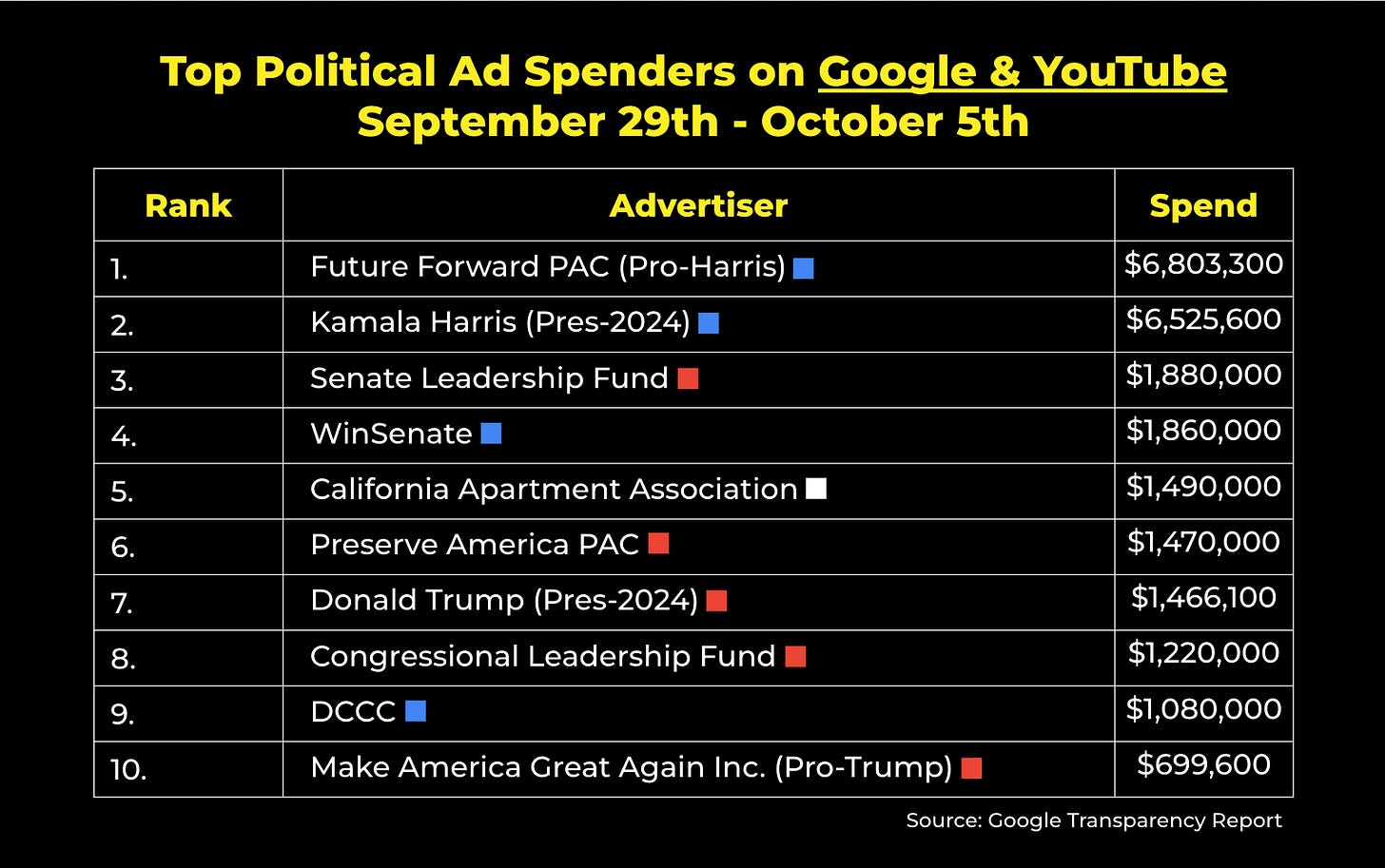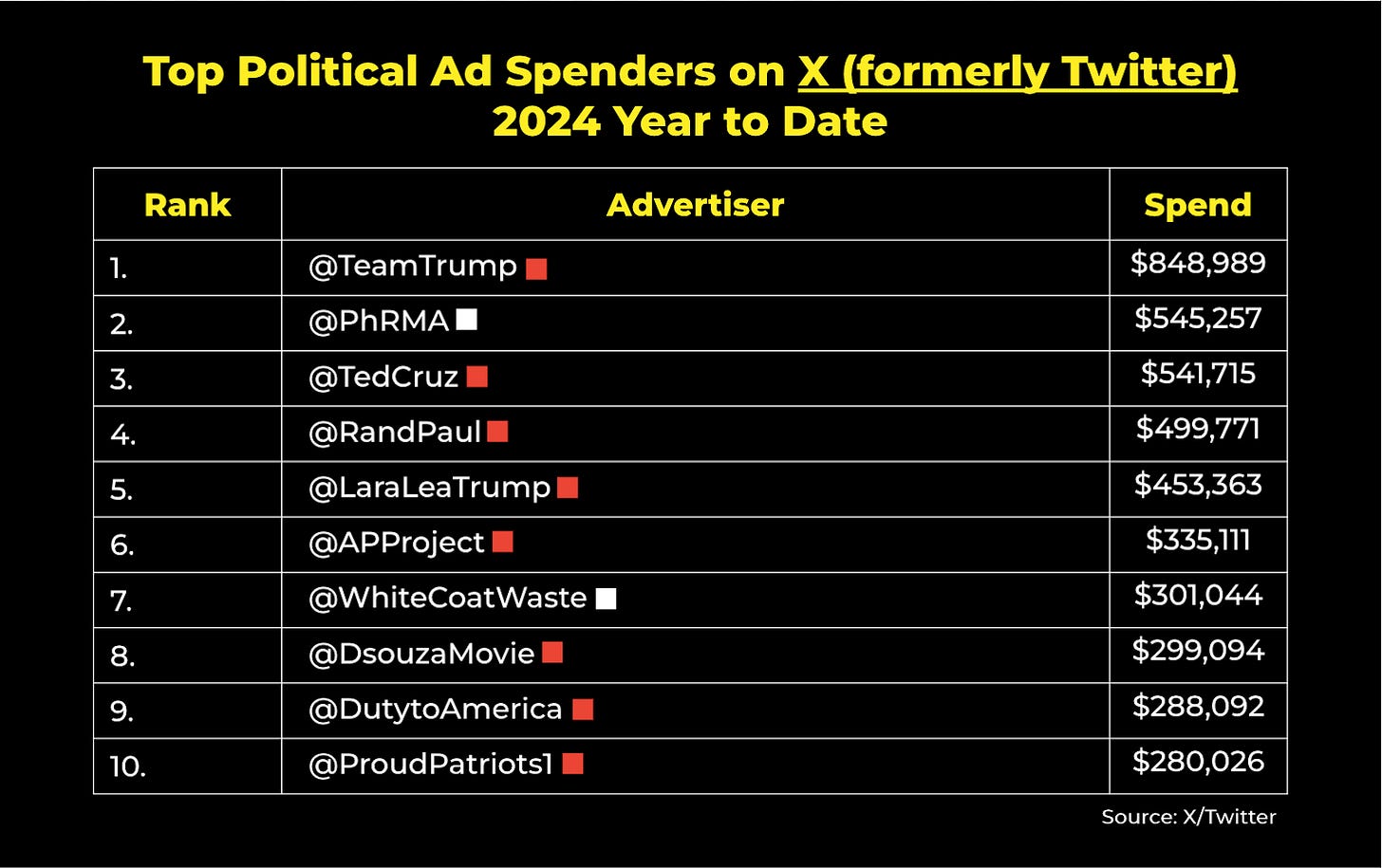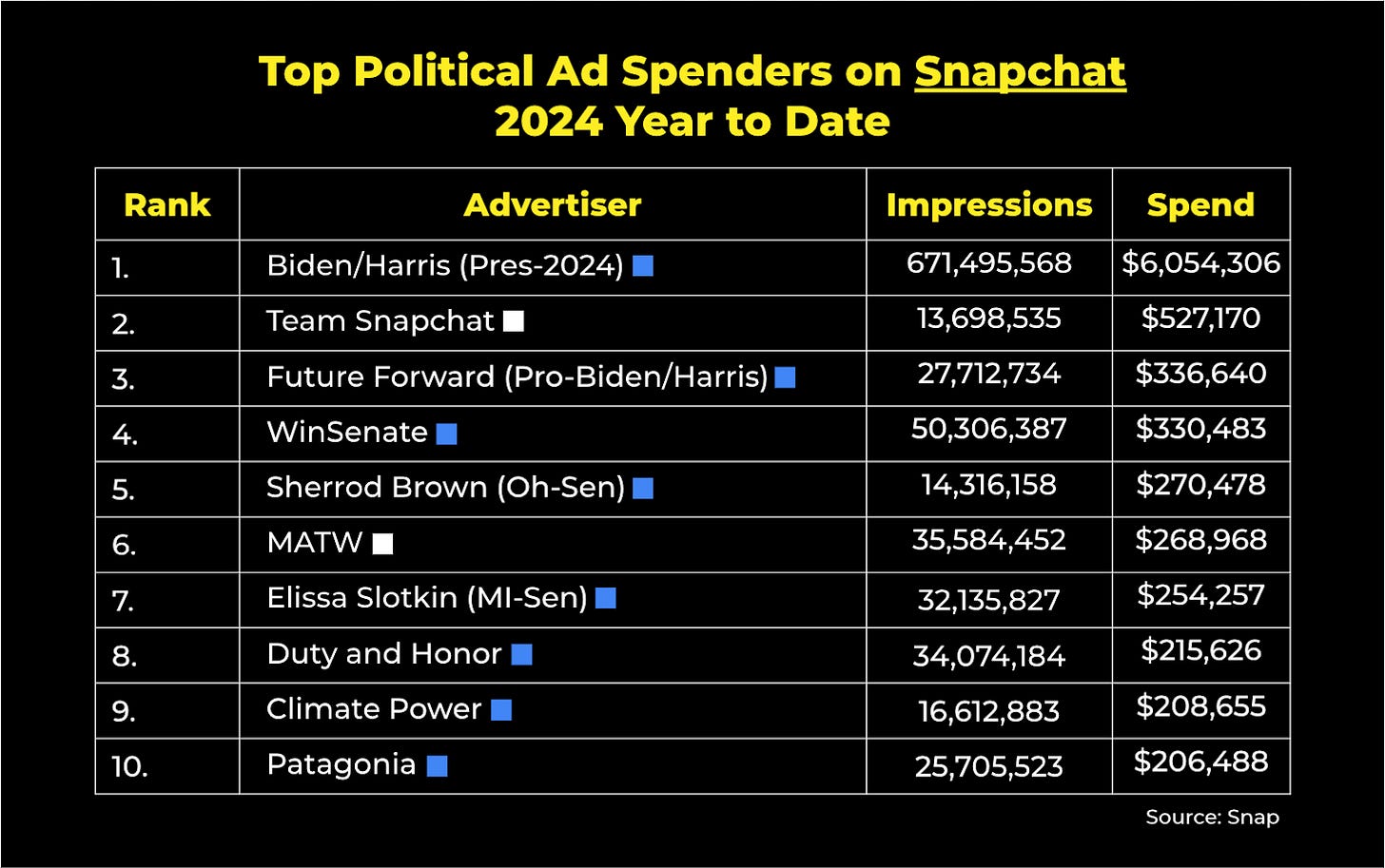Is the bro vote overhyped?
Here’s why the political press can’t stop talking about the battle for male voters
FWIW, this week’s newsletter is sponsored by Civic Shout
It’s become political canon that Democrats have won the last few years of critical elections by turning out an unprecedented amount of women voters. “Once again it’s the women who saved us,” Jim Messina, former Obama campaign manager declared on MSNBC the day after the 2022 midterms. In 2020, Black women voters in particular were credited with flipping battleground Georgia and electing Joe Biden, and “Thank Black Women” has become a common refrain repeated among Democrats in the Trump era. It has become an indisputable fact that women continue to drive Democratic victories up and down the ballot in off-year races, and have been responsible for winning abortion rights referendums in the reddest of red states.
So why is everyone suddenly talking about men, and how are the campaigns trying to reach them?
Here’s how the conventional political wisdom goes: Donald Trump’s best chance at success in November requires minimizing his losses among women and suburbanites, while building a coalition that includes a historic number of male and working-class voters in his corner. The Washington Post published a great deep dive into this gender-driven strategy a few weeks back. That means that a part of the Harris campaign’s job is to counter Trump’s efforts among those specific demographics – or, at least, not feed into the narratives he's sowing among men.
As a result, we’re seeing both campaigns and their allies attempt to reach men in unprecedented and unconventional ways online. Here’s how they’re doing it:
Podcasts
Some people are declaring 2024 “the podcast election,” as both campaigns have leaned into podcasts that are listened to by hard-to-reach male voters. Just this week, Trump went on comedy podcast FLAGRANT, where the host laughed in his face when the former president referred to himself as “basically a truthful person.”
Trump also called into Ben Shapiro’s pod this week and had recently sat down for a taping of the Lex Fridman podcast, Jake Paul’s show, and Theo Von’s pod, among others. These appearances have been listened to or viewed by millions of Americans - and most of them are men.
However, the Harris campaign hasn’t ceded the audio manosphere to Trump and his MAGA allies. Harris went on Howard Stern’s show this week, which produced some pretty powerful moments and viral content for the campaign.
She also appeared on NBA pod All the Smoke and Harris surrogate Mark Cuban went on Theo Von’s pod to needle Trump. Next week, Harris plans to appear on The Breakfast Club with Charlamagne tha God.
Content & Creators
Aside from pod content, both campaigns have been aggressively courting content creators and innovative platforms for reaching men organically online. Democrats invited Twitch star Hasan Piker to cover the Democratic National Convention this summer, and the Harris campaign partnered with another popular Twitch streamer to stream a recent campaign rally alongside World of Warcraft gameplay. According to POLITICO, they’re also sending Tim Walz out hunting with a few prominent digital creators next week, and the VP candidate intends to double down on a media blitz to reach male voters.
On the Right, the Trump campaign’s entire online content strategy has been driven by trying to reach younger male voters through hypermasculine, right-leaning creators, influencers, and celebrities. Trump’s first TikTok video his campaign posted featured UFC’s Dana White, and the Trump campaign’s content featuring Logan and Jake Paul has received tens of millions of views. This summer, Trump sat down with streamer Adin Ross, and apparently, the Nelk Boys, a Canadian-American influencer squad, are carrying out a voter registration effort to turn out young men.
Messaging & advertising
Some of the wildest aspects of the campaigns’ bro outreach are the messages and issues they have determined young men care about. While much of the messaging directed to men and young men has been focused on the economy, some campaigns are bringing up more niche issues: specifically, nicotine and pornography. On the Right, Trump and his allies have attempted to instigate a “Zynsurrection,” running digital ads telling voters that Democrats will either tax or take away their favorite nicotine pouches. On top of that, we noted last week how MAGA super PACs are also running ads targeting younger voters on the economy and inflation.
On the Left, at least one group is working with adult film stars to warn about Trump’s Project 2025 and how far-right actors want to ban pornography and recreational sex. And Future Forward, the pro-Harris super PAC, has begun featuring white working-class males with economic, Bernie Sanders-style messaging in new ads.
Overhyped?
It's honestly hard to determine whether all of these efforts and the conversation around the importance of male voters are overhyped or not. (A reminder: Young men historically vote at lower rates than young women.) We’ve entered the silly season of the election, and one elite Twitter conversation or unexpected poll has the potential to spin dozens of political reporters into a frenzy over the Next Big Thing.
For Trump though, it seems like targeted outreach to this segment of the electorate is essential: if he can’t win record numbers of men, it's unlikely he can win the White House. For the Harris campaign and their allies, these male-focused outreach efforts are happening in addition to major campaigns and organizing programs designed to reach more dependable parts of their coalition.
Imagine paying 2-10x less for email & SMS opt-ins
If you think you’re overpaying for new donors, you probably are. Try Civic Shout and acquire fired-up opt-ins for as little as $0.75 each. Learn more >>
Digital ad spending, by the numbers:
FWIW, political advertisers spent just over $36.4 million on Facebook and Instagram ads last week. These were the top ten spenders nationwide:
A conservative group called the Job Creators Network, funded by Republican mega-donor and Home Depot founder Bernie Marcus, is running English- and Spanish-language ads attacking VP Harris for being bad for small businesses. The ads are running in key swing states like Pennsylvania, Wisconsin, and Arizona.
There have also been a significant amount of ads being run in recent days by a sketchy LLC called BS Promotions. The right-wing marketing scam account spent more than half a million dollars last week on ads that are trying to get conservatives to hand over their credit card numbers while claiming VP Harris and “her puppet masters” are trying to destroy the country. These types of Facebook scammers are very common on the Right, especially during election season.
On a more positive note, the Voter Formation Project spent more than $442,000 on ads urging people to make a plan to vote, whether that’s in person or by mail. The ads are targeting residents of key states like Pennsylvania and Arizona. Voter Formation Project was founded after the 2020 election to bring marginalized people of color into the electorate and uses innovative digital advertising strategies to do so.
Meanwhile, political campaigns spent $44.4 million on Google and YouTube ads last week. Here were the top ten spenders nationwide:
Future Coalition PAC, which is a conservative super PAC, spent $146,200 on Google + YouTube ads this past week that are… incredibly shady. Different ads either accuse VP Harris of standing with Palestine (targeted to Jewish voters) OR of standing with Israel (targeted to Arab voters) – attacking her for whichever position the targeted voters don’t want to hear 🫠
On X (formerly Twitter), political advertisers in the U.S. have spent $13.2 million on ads year to date. Here are the top spenders:
The conservative Duty to America PAC appears to have ramped up their spending on X/Twitter ads this week, moving their total 2024 X spend to $288,000+. In the last few weeks, the group has started running new anti-Harris ads like this one which tells VP Harris to “stay away from our zyn pouches” – the group is definitely part of the “Zynsurrection” MAGA messaging that we discussed above.
…and lastly, on Snapchat, political advertisers in the U.S. have spent $17.2 million on ads year to date. Here are the top spenders:
A PAC supporting Democratic Sen. Jon Tester, Last Best Place PAC, is also ramping up its spending on Snapchat ads hitting his Republican opponent in Montana, Tim Sheehy.
Presidential head-to-head
FWIW, here’s how weekly digital ad spending (Facebook/Instagram, Google/YouTube) compares between the Trump and Harris (formerly Biden) campaigns year-to-date:
“We saw over 200% ROAS in two months!”
Digital Directors are talking about Civic Shout - the new list-growth platform that’s quietly becoming the industry standard. See for yourself >>
New TikTok data + charts
The vibes over on TikTok have been generally pretty positive for VP Harris since she entered the race. But that doesn’t mean that she hasn’t been the subject of some viral attack videos that have amassed millions of views and likes. We have the analysis of what exactly those videos are about and much more in this week’s FYP newsletter 👇
More from around the internet:
Internal research from TikTok says its product can be harmful to its users' mental health.
Just in time for election season, we noticed a new Philly-based civic news organization called The Download has launched to build a platform for Black voters to get their news about politics (as well as history and art). Their TikTok is already up and running.
Kyle was on The Lost Debate podcast this week to talk to Ravi Gupta about the 2024 digital battle. Listen here >>
We all know that Republicans are vastly outspending Democrats on Elon Musk’s X/Twitter (and it’s also worth noting that’s the only platform where this is the case). But will that actually have any effect on voters?
New research from NYU + UT found that a lot of political info on encrypted messaging apps (like Telegram and WhatsApp) comes from users that people don’t follow… and it seems like it's pretty impactful (check out pages 19-20 here).
One last thing: Subscribe to WIRED Politics Lab
One reason why I’ve continued to write FWIW over the years has been my feeling that many mainstream political or tech reporters lacked either the expertise or the time to cover the political digital space. That’s not the case with Makena Kelly, a veteran journalist at WIRED who is chronicling the intersection of the internet and politics each week via the WIRED Politics Lab newsletter. It’s a must-read, subscribe here >>
That’s it for FWIW this week. This email was sent to 23,847 readers.If you enjoy reading this newsletter each week, would you mind sharing it on Twitter or Threads? Have a tip, idea, or feedback? Reply directly to this email.











This aged very badly in less than a month.